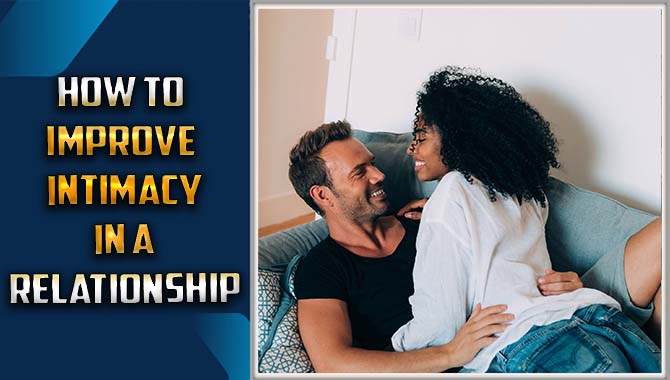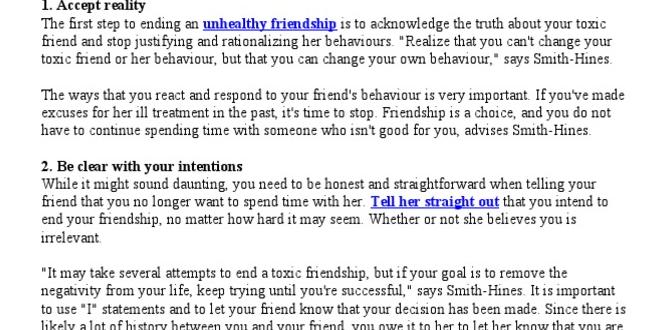Tired of relationship struggles? Discover proven emotional healing strategies to mend ties and build stronger connections. This guide offers simple, actionable steps to understand and overcome common relationship problems, leading to more fulfilling friendships and partnerships.
Best Relationship Advice: Proven Emotional Healing untuk Better Connections
Navigating relationships can sometimes feel like walking a tightrope. We all want deep, meaningful connections, whether with friends, partners, or family. Yet, misunderstandings, old hurts, and communication breakdowns can leave us feeling disconnected and frustrated. It’s common to wonder why certain patterns keep repeating or how to truly heal from past emotional wounds that impact our present relationships. You’re not alone in this journey. This article will guide you through practical, step-by-step methods for emotional healing in your relationships, helping you build trust, foster understanding, and create bonds that last. Let’s explore how to move forward with more connection and less conflict.
Understanding Emotional Healing in Relationships
Emotional healing in relationships is about acknowledging past hurts and learning how to move beyond them. It’s not about forgetting what happened, but about processing those experiences so they no longer control your present connections. When we experience emotional pain—like betrayal, neglect, or constant criticism—it can create deep wounds. These wounds can make it hard to trust, be vulnerable, or communicate openly with loved ones.
Think of it like tending to a physical wound. If you don’t clean and dress a cut properly, it might get infected and take much longer to heal, leaving a scar. Emotional wounds work similarly. Without conscious effort to heal, they can fester, impacting how you interact with others, often leading to:
- Recurring arguments over the same issues.
- Difficulty forming new, healthy attachments.
- Feeling constantly defensive or guarded.
- A sense of loneliness even when surrounded by people.
- Unhealthy patterns like people-pleasing or avoidance.
The good news is that healing is possible for everyone. It involves understanding yourself better, learning effective communication skills, and practicing empathy for yourself and others. This process can transform your relationships from sources of stress into sources of joy and support. We’ll break down how to do this in simple, manageable ways.
Common Relationship Problems Hindering Emotional Healing
Before we dive into healing, it’s crucial to identify what often goes wrong. Recognizing these common pitfalls is the first step toward overcoming them.
1. Poor Communication: The Root of Misunderstandings
This is perhaps the most frequent culprit. When we don’t express our needs clearly, or when messages get misinterpreted, it leads to frustration and hurt. It’s not just about talking; it’s about listening and truly understanding.
- Not expressing needs: Hoping others “just know” what you want or feel.
- Aggressive or passive communication: Either attacking or withdrawing, neither of which resolves issues.
- Interrupting or not listening: Making the other person feel unheard.
- Assuming intentions: Believing negative motives behind someone’s actions without confirming.
2. Unresolved Past Hurts (Ghosts of Relationships Past)
We often bring baggage from previous relationships (romantic, familial, or friendships) into new ones. If old wounds haven’t healed, they can trigger disproportionate reactions to current situations.
- Trust issues: Difficulty trusting a new partner because of a past betrayal.
- Fear of abandonment: Becoming overly clingy or anxious due to past experiences of loss.
- Criticism sensitivities: Reacting strongly to feedback because of past harsh judgments.
3. Lack of Empathy and Understanding
Empathy is the ability to step into someone else’s shoes and understand their feelings. When empathy is missing, it’s easy to dismiss others’ experiences or react solely from our own perspective.
- Invalidating feelings: Telling someone “you shouldn’t feel that way.”
- Not considering perspectives: Believing your way of seeing things is the only right way.
- Focusing only on your own hurt: Neglecting to acknowledge the pain the other person might be experiencing.
4. Unmet Expectations and Differing Needs
We all have expectations, but sometimes they’re unrealistic or uncommunicated. When these expectations aren’t met, disappointment and resentment can build.
- Unrealistic standards: Expecting a partner to always know what you need or be available 24/7.
- Unspoken needs: Waiting for someone to fulfill needs you’ve never articulated.
- Conflicting core values: Sometimes, people simply want different things out of life, which can cause friction.
5. Fear of Vulnerability
Opening up emotionally can be scary. The fear of being rejected, judged, or hurt can cause us to put up walls, preventing true intimacy and emotional connection.
- Hiding true feelings: Pretending to be okay when you’re not.
- Avoiding deep conversations: Steering clear of topics that feel too personal or risky.
- Putting up a strong front: Always appearing in control and never showing weakness.
The Path to Emotional Healing: A Step-by-Step Guide
Healing isn’t a destination; it’s an ongoing process. Here’s a breakdown of actionable steps you can take to foster emotional healing in your relationships.
Step 1: Cultivate Self-Awareness
The journey to healing begins within. Understanding your own emotions, triggers, and patterns is fundamental.
- Journaling: Regularly write down your feelings, particularly after difficult interactions. Ask yourself: What did I feel? Why might I have felt that way? What was my role in the situation?
- Mindfulness and Meditation: Practice being present. This helps you notice your emotions as they arise without immediately reacting. Apps like Headspace offer guided meditations to get started.
- Identify Your Triggers: What specific words, actions, or situations reliably evoke a strong emotional response in you? Knowing your triggers allows you to prepare and manage your reactions better.
- Seek Feedback (Carefully): Ask trusted friends or a therapist for their objective observations about your communication and emotional responses.
Step 2: Master Healthy Communication
Effective communication is the bedrock of any strong relationship. It’s about expressing yourself clearly and listening empathetically.
- Use “I” Statements: Instead of “You always make me feel…” try “I feel [emotion] when [situation] because [reason].” This focuses on your experience without blaming.
- Active Listening: When someone speaks, give them your full attention. Nod, make eye contact, and paraphrase what they said to ensure you understood. For example, “So, if I’m understanding correctly, you’re saying…”
- Express Needs Clearly and Kindly: Don’t hint or expect mind-reading. State your needs directly but gently. “I need some quiet time when I get home from work” is better than sulking.
- Take Breaks When Needed: If a conversation becomes too heated, agree to pause and revisit it later when emotions have calmed. “I need to take a break for 10 minutes before we continue this.”
Step 3: Practice Empathy and Validation
Understanding and acknowledging another person’s feelings is crucial. It doesn’t mean you agree, but it shows you care.
- Listen to Understand, Not Just to Respond: Focus on grasping their perspective, even if it differs from yours.
- Validate Their Feelings: Use phrases like, “I can see why you would feel upset about that,” or “That sounds really frustrating.” This shows you acknowledge their emotional reality.
- Seek Shared Understanding: Try to find common ground or shared emotions. “We’re both probably feeling stressed about this deadline.”
Step 4: Address Past Hurts and Triggers
This is where deeper healing happens. It often involves looking back with new eyes.
- Acknowledge the Pain: Recognize that past hurts were real and had an impact. Don’t minimize your own experience.
- Reframe Negative Beliefs: Challenge lingering negative thoughts about yourself or others formed due to past wounds. For instance, if you were often criticized, you might have a belief that “I’m not good enough.” Work to reframe this as “I’m learning and growing.”
- Practice Forgiveness (for Yourself and Others): Forgiveness isn’t condoning bad behavior; it’s about releasing yourself from the burden of holding onto anger or resentment. This can be a long process, and seeking professional help is invaluable here.
- Seek Professional Support: Therapists can provide a safe space and tools to process trauma, understand patterns, and develop coping mechanisms. Cognitive Behavioral Therapy (CBT) and Eye Movement Desensitization and Reprocessing (EMDR) are examples of effective therapies. Organizations like the U.S. Department of Health & Human Services offer resources for finding mental health support.
Step 5: Set Healthy Boundaries
Boundaries protect your emotional and physical well-being. They define what is acceptable and unacceptable in your relationships.
- Identify Your Limits: What are you willing and unwilling to do or tolerate?
- Communicate Boundaries Clearly: State your boundaries politely but firmly. “I’m not comfortable discussing my finances.”
- Enforce Boundaries Consistently: If a boundary is crossed, address it. This might mean limiting contact or stepping away from a situation.
- Respect Others’ Boundaries: Pay attention to and honor the limits set by others.
Tools and Techniques for Ongoing Emotional Healing
Journaling Prompts for Deeper Insight
Use these prompts to explore your emotional landscape:
- What does this conflict reveal about my unmet needs?
- How did this situation remind me of a past experience, and how can I respond differently now?
- What is one small step I can take today to show myself kindness and compassion?
- What boundaries do I need to reinforce in my relationships this week?
- How can I practice active listening more effectively in my next conversation?
The “Feeling Wheel” for Better Emotional Expression
Sometimes, we struggle to name our emotions precisely. The feeling wheel can help. It’s a visual tool that expands your emotional vocabulary beyond basic terms like “happy” or “sad.”
For example, instead of just saying “I’m sad,” you might identify that you’re feeling “disappointed,” “lonely,” or “grieved.” This specificity helps in communicating your needs and understanding your own internal state more accurately. You can find versions of the feeling wheel online from reputable psychology resources.
Here’s a simplified example of a feeling wheel structure:
| Core Emotion | Examples of Specific Feelings |
|---|---|
| Happy | Joyful, Content, Excited, Grateful, Hopeful |
| Sad | Disappointed, Lonely, Grieved, Melancholy, Despondent |
| Angry | Frustrated, Irritated, Resentful, Annoyed, Furious |
| Afraid | Anxious, Nervous, Worried, Terrified, Insecure |
| Surprised | Astonished, Shocked, Startled, Disbelieving |
| Disgusted | Repulsed, Revolted, Aversion, Contemptuous |
Building a Support System
You don’t have to heal alone. A strong support system is vital.
- Trusted Friends: People who listen without judgment and offer genuine support.
- Family: If you have healthy family relationships, lean on them.
- Support Groups: Connecting with others who have similar experiences can be incredibly validating and informative.
- Therapists/Counselors: Professionals trained to guide you through emotional healing.
Table: Comparing Healthy vs. Unhealthy Relationship Dynamics
Understanding the difference between healthy and unhealthy patterns can highlight areas for growth.
| Characteristic | Healthy Dynamics | Unhealthy Dynamics |
|---|---|---|
| Communication | Open, honest, respectful, active listening, “I” statements. | Poor listening, blaming, yelling, silent treatment, avoiding difficult topics. |
| Conflict Resolution | Focus on problem-solving, seeking win-win solutions, compromise, apologies offered and accepted. | Personal attacks, holding grudges, refusing to apologize, recurring arguments without resolution. |
| Trust & Safety | Feeling secure, respected, and free to be oneself without fear of judgment or reprisal. | Constant suspicion, fear of vulnerability, criticism, emotional manipulation. |
| Boundaries | Clearly defined and respected, allowing for individual space and autonomy. | Blurred or non-existent boundaries, invasion of privacy, pressure to compromise personal values. |
| Support & Growth | Encouragement of individual goals and personal growth, mutual support during challenges. | Sabotage of goals, excessive dependence, feeling drained or diminished by the relationship. |
| Vulnerability | Ability to share feelings and fears openly, met with empathy and acceptance. | Fear of sharing, perceived weakness leading to exploitation or dismissal. |
Navigating Specific Relationship Types
Friendships
Healthy friendships are built on mutual respect, shared interests, and authentic support. Emotional healing in friendships involves addressing past hurts that might make you guarded or clingy. It’s about setting boundaries when a friend takes too much or doesn’t give back, and communicating your needs kindly. Sometimes, healing means letting go of friendships that are no longer serving either person.
Romantic Relationships
Romantic relationships require a deep level of trust and emotional intimacy. Healing here often involves confronting past experiences of heartbreak or betrayal. Practicing open communication about desires, fears, and expectations is crucial. Couples counseling can be incredibly beneficial for navigating complex emotional issues and rebuilding trust after difficult periods. Resources from organizations like the National Domestic Violence Hotline can be vital for assessing relationship health and safety.
Family Relationships
Family dynamics can be some of the most complex due to shared history and ingrained patterns. Healing family wounds may involve setting firm boundaries with difficult relatives, understanding family roles played out over years, and accepting that you cannot change others, only your reaction to them. Forgiveness, if possible and safe, can be a powerful tool for personal peace.
Frequently Asked Questions (FAQ)
Q1: How long does emotional healing in relationships take?
Emotional healing is a journey, not a race. It can take weeks, months, or even years, depending on the depth of the hurt and your commitment to the process. Progress is often not linear, and setbacks are normal. Focus on consistent effort rather than a specific timeline.
Q2: What if my partner doesn’t want to heal or talk about issues?
You can only control your own actions and commitment to healing. While it’s ideal to work on issues together, focus on your personal growth and healthy communication. Set boundaries for yourself regarding what you will and will not tolerate. Sometimes, individual therapy can help you navigate these challenges.
Q3: Is it possible to heal from significant betrayal?
Yes, it is possible to heal from significant betrayal, but it’s a challenging process. It often requires deep introspection, professional guidance, and a commitment from both parties (if applicable) to rebuild trust through consistent actions and transparent communication. Forgiveness is a personal choice and not always a prerequisite for moving forward.
Q4: How do I know if a relationship is beyond healing?
Consider if there’s a consistent pattern of disrespect, abuse (emotional, physical, or verbal), lack of remorse for hurtful actions, or a fundamental incompatibility in values and life goals. If one or both parties are unwilling to acknowledge problems, communicate effectively, or make efforts toward change, a relationship may be beyond repair.
Q5: Can I heal in a relationship if I have past trauma?
Absolutely. Past trauma can significantly impact current relationships, but it doesn’t mean you can’t have healthy connections. Healing past trauma through therapy and self-care is often a prerequisite for building and sustaining healthy relationships. Be open with your partner about your journey, and seek support when needed.
Q6: What’s the difference between forgiveness and reconciliation?
Forgiveness is an internal process of letting




